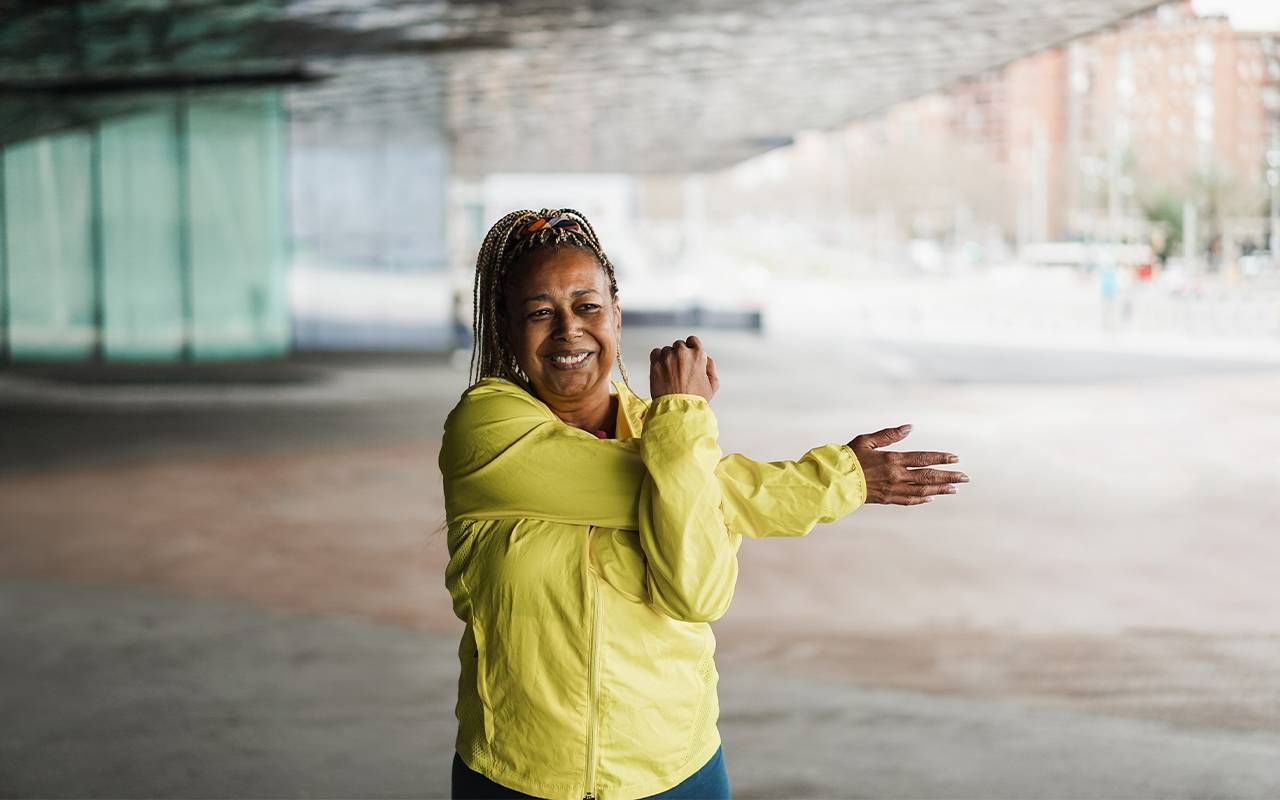How to Stay Flexible at Any Age
Strength, balance and flexibility are interrelated - take these steps to become more flexible
"By age 70, about 25 to 30% of overall flexibility is lost," says Jennifer Tripken, associate director for the Center of Healthy Aging at the National Council on Aging (NCOA). The result? Loss of flexibility can cause pain, loss of muscle strength and balance issues.

Flexibility, endurance, strength and balance are all types of fitness. "Having good flexibility can help increase your balance and muscle strength," Tripken says, "which will increase your ability to engage in the activities of daily living, reduce pain and decrease your risk of falls and other injuries."
A loss of flexibility is often due to decreased physical activity, so keeping your body moving is essential.
Why Flexibility Matters
If you aren't that flexible, your everyday life and independence can become compromised. "A loss of flexibility can result in no longer being able to enjoy or engage in the activities you once did, such as going for a walk, driving and getting in and out of bed," Tripken explains.
"A loss of flexibility is also associated with a decrease in balance."
Falls are the leading cause of injury in older adults, and being flexible goes a long way in reducing fall risk. However, balance is also a factor. "A loss of flexibility is also associated with a decrease in balance, so someone may feel unsteady on their feet if their flexibility is reduced," Tripken says.
Since strength, balance and flexibility are interrelated, working with a physical therapist or another health care professional may help fully assess your level of fitness.
Stretching is Fundamental
"Stretching is the primary way to improve flexibility," Tripken says. Most ways of improving flexibility incorporate stretching, which can help improve posture and balance.
For example, poor posture is related to hunching over, a sign that those muscles around the neck and upper back are weak. "When someone stretches, those muscles are put to work and posture will improve," Tripken adds.
It is vital to select a program you enjoy and can easily engage with.
In turn, improved posture will help you move more efficiently and increase the range of motion in your neck, thereby improving overall mobility and reducing pain and the risk of injury.
The Mayo Clinic cautions people to warm up their muscles before stretching because they might injure themselves if stretching cold muscles. Five minutes of light walking is enough to warm up muscles. While stretching, you should feel a little muscle tension but no pain.
Aim for stretching at least two to three times a week. If you have an injury or chronic health condition, consult your physician or a physical therapist before undertaking a stretching or exercise routine.
Regain Muscle Mass and Flexibility
"Physical activity has been shown to slow down the natural reduction in flexibility and muscle strength associated with aging," Tripken says. "Older adults can improve their flexibility by engaging in regular physical activity that targets flexibility."
You can choose an in-person exercise or online classes. But first, select a program you enjoy and can easily engage with.
A Few Simple Exercises to Improve Flexibility
The Overhead Side Stretch
- It can be done standing or seated.
- Raise your arms overhead and interlace your fingers if you can.
- Keep your torso long. Gently lean to the left and hold for 10 to 30 seconds before returning to the center.
- Repeat gently leaning to the right and hold for 10 to 30 seconds.
The Shoulder Stretch
- It can be done standing or seated.
- Reach your right arm across your body.
- Place your left hand on your upper right arm and draw your right arm closer.
- Hold for 10 to 30 seconds and release.
- Switch arms and repeat.
Calf Stretch
- Stand with your left leg in front, slightly bent, and your right leg behind.
- You can do this exercise near a wall or counter to hold on for support.
- Gently press your right heel into the floor to feel a comfortable stretch.
- Hold this stretch for 10 to 30 seconds before releasing.
- Switch legs and repeat the exercise.
Flexibility should be a part of a daily exercise program addressing strength, balance and endurance.
According to Tripken, engaging in physical activity can help older adults remain independent and find that their quality of life is improved.
"Not only does physical activity allow a person to engage in the activities of daily living (ADL), but to enjoy the things in life that bring meaning, purpose, and joy such as playing with grandchildren, socializing with friends and family, and engaging in hobbies such as gardening or painting."
Talk to your doctor or a physical therapist to find a stretching and exercise program right for you. For more information and exercises, visit the National Institute on Aging website or check out this YouTube video.

